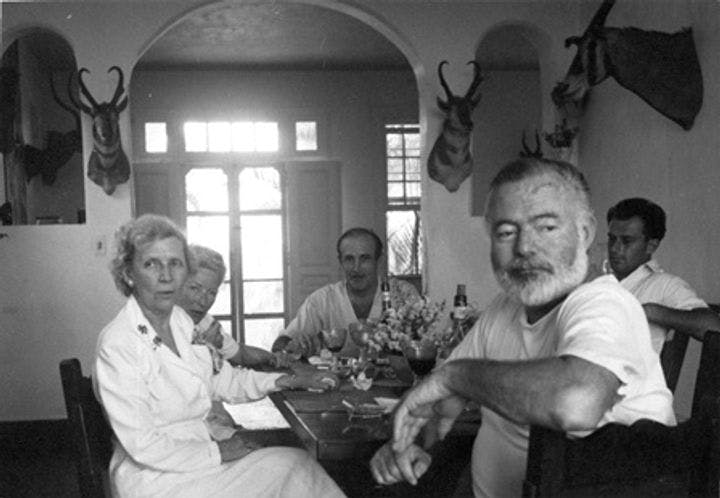Winter 2011
Papa's Painful Passion
– The Wilson Quarterly
According to F. Scott Fitzgerald, Ernest Hemingway needed "a new woman for each big book." For Hemingway, creativity came from following those passions, even to destructive ends.
It sounds a bit like a Hemingway novel: An aging novelist, bound for Europe on the Île de France with his fourth wife, meets a vivacious, attractive fellow passenger, and during the long Atlantic crossing flirtation blossoms into infatuation. During the ensuing month’s sojourn in France, the young woman—to the annoyance of the novelist’s wife—joins them, and not even the arrival of the woman’s own husband blunts the budding affair.
Four recently discovered love letters reveal the players in this ménage à quatre: Ernest Hemingway, fresh from completing Across the River and Into the Trees (1950), his first novel in 10 years; his wife, Mary; Jigee Viertel (née Virginia Ray of Pittsburgh); and Viertel’s husband, Peter, also a writer, who later penned a memoir of Hemingway, Dangerous Friends. According to Berkeley-based writer Jeffrey Meyers, author of a 1999 biography of Hemingway, “these letters reveal Hemingway constructing and prolonging a romantic fantasy, part paternal and protective, part courtly and devoted.” Jigee seems to have both encouraged and enjoyed the older novelist’s attention, and made no effort to conceal it from her husband. Hemingway, she told Peter, simply needed to be “a tiny bit in love with someone in order to feel more alive.”
“When you went away,” Hemingway wrote to Jigee, after she and Peter left for Paris, “I missed you so badly that better not to talk, nor think, nor write it.” He told her, “I feel like people feel after big amputations.” He portrayed himself, in a letter sent the next day, as “the loneliest worst dressed man in the world,” but made no mention of his wife. Yet it was around this time that Hemingway confessed to Mary—as she revealed in a later memoir—“in devastating detail Jigee’s campaign to snare him. ‘[Mary] obviously doesn't appreciate you. We’ll have a ranch with horses in California and you can give up the heat of Cuba. I understand your wonderful sensibilities.’ ”
Despite these intimate glimpses into Hemingway’s doings, Meyers aligns himself with Peter Viertel’s impression of the relationship. Hemingway was, as Meyers puts it, “more in love with the idea of love than with the actual woman, and his painful passion for Jigee was probably not consummated.”
Hemingway’s infatuation with Jigee fits neatly into a pattern noted earlier by F. Scott Fitzgerald, who once observed, “I have a theory that Ernest needs a new woman for each big book. There was one for the stories and The Sun Also Rises. Now there’s Pauline [his second wife]. A Farewell to Arms is a big book. If there’s another big book I think we’ll find Ernest has another wife.” As Hemingway aged, Meyers believes, and became “more anxious, fearful about his health and his creativity, he needed to be ‘a tiny bit in love with someone’ to ward off despair and remind him of how he felt when he wrote his best work.”
Hemingway’s battle with despair ended in suicide in 1961. Jigee, too, met a sad end. Peter abandoned her when she was pregnant with their only child, and she became an alcoholic; in 1960, Meyers reports, “she accidentally lit her nightgown with her cigarette, suffered horrible burns, and died after a month in hospital.”
* * *
The Source: "Hemingway in Love: Four Found Letters" by Jeffrey Meyers, in Raritan, Summer 2010.
Photo courtesy of The John F. Kennedy Presidential Library and Museum
